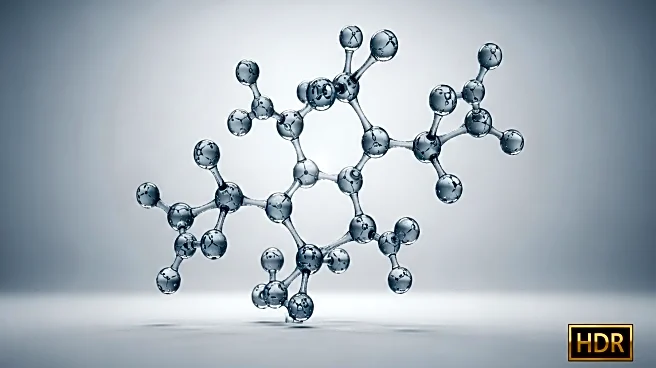What's Happening?
Researchers at Northwestern University have unveiled a study detailing how the bacterium Pseudomonas putida reorganizes its metabolism to digest lignin, a complex carbon found in plant waste. This bacterium adjusts its metabolic pathways to efficiently extract energy from lignin, a biopolymer second only to cellulose in abundance on Earth. The study provides a quantitative blueprint of how bacteria coordinate carbon metabolism and energy production during lignin digestion. This discovery could significantly impact the biomanufacturing industry, which aims to utilize Pseudomonas putida for converting lignin into biofuels, plastics, and other chemicals. The research highlights the bacterium's ability to produce six times more ATP, an energy molecule, when consuming lignin compared to simpler compounds.
Why It's Important?
The findings from this study have the potential to revolutionize the biomanufacturing industry by providing a roadmap for using bacteria to convert plant waste into valuable products. By understanding the metabolic processes of Pseudomonas putida, researchers can develop more efficient microbial factories, reducing reliance on petroleum-based products. This could lead to more sustainable production methods for biofuels and plastics, offering environmental benefits and economic opportunities. The study also underscores the importance of maintaining metabolic balance in bacteria, which is crucial for successful biotechnological applications.
What's Next?
The study suggests that further research is needed to explore the delicate balance of bacterial metabolism and its implications for biotechnology. Engineers in the biotech industry may need to refine their strategies for manipulating bacterial pathways to optimize production without disrupting metabolic balance. This could involve developing new methods to enhance bacterial efficiency in processing lignin while maintaining energy equilibrium. The insights gained from this study could pave the way for innovative approaches in sustainable manufacturing and energy production.











